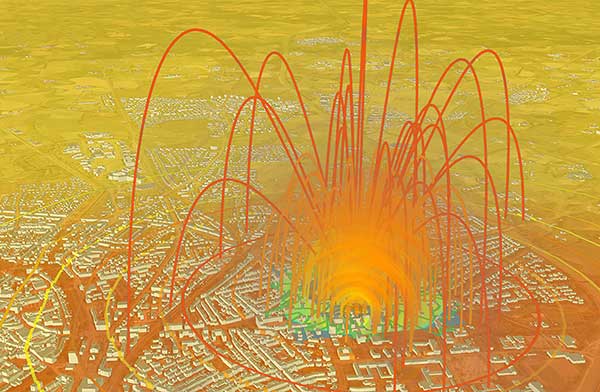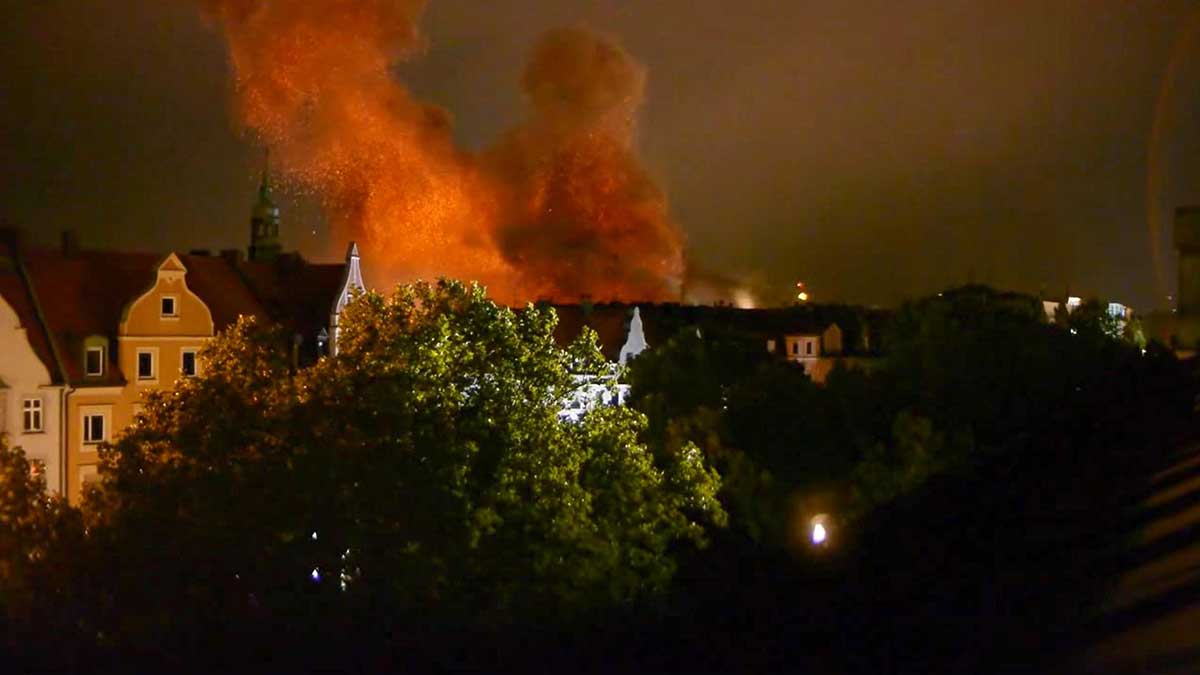Fraunhofer EMI develops numerical models, that predict fragmentation flight and vibrations and minimize risks.

It is estimated that 5 to 15 percent of the 1.4 million tons of bombs dropped are still in the ground. In most cases, these unexploded bombs can be neutralized, but sometimes controlled detonations are necessary. To limit the blast wave and, above all, the flying fragments, the bomb is covered with sand again before detonation. However, this has a disadvantage: the energy of the explosion penetrates more deeply into the ground. The resulting voltage waves can damage nearby underground structures such as gas pipes, subway shafts or basement walls.
In the SIRiUS project, the Fraunhofer EMI, the Explosive Ordnance Disposal Service NRW and the company Virtual City Systems developed software that simulates controlled explosions in a 3D city model. The current BMFTR project Schockanalyst builds on this. It extends the software so that explosive ordnance disposal services can compare different safety measures and better assess the effects of shock waves in the ground.
Numerical models are being developed at EMI to calculate the influence of sand cover on fragmentation and ground shock. The behavior of the soil as a three-phase mixture of particles and water- and air-filled pores poses a particular challenge. Precisely simulating these extreme dynamic loads is only one aspect of the project. A large-scale test – the planned detonation of six buried 500-pound bombs – will show how well the models reflect reality.
